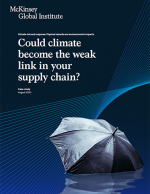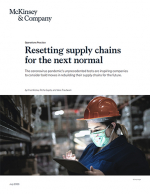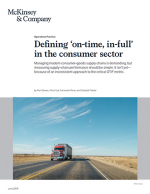Jobs Lost, Jobs Gained: Workforce Transitions in a Time of Automation
This report examines questions surrounding robotic automation - will there be enough work in the future to maintain full employment, and if so what will that work be? which occupations will thrive, and which ones will wither? what are the potential implications for skills and wages as machines perform some or the tasks that humans now do?
The report is part of the McKinsey Global Institute’s research program on the future of work, and is by no means the final word on this topic.
The technology continues to evolve, as will our collective understanding of the economic implications.
Indeed, we highlight some of the limitations of our analysis and scenarios, and areas for further research.
The report builds on our previous research on labor markets, incomes, skills, and the expanding range of models of work, including the gig economy, as well as the potential impacts on the global economy of digitization, automation, robotics, and artificial intelligence.
In our latest research on automation, we examine work that can be automated through 2030 and jobs that may be created in the same period.
We draw from lessons from history and develop various scenarios for the future.
While it is hard to predict how all this will play out, our research provides some insights into the likely workforce transitions that should be expected and their implications.
Key Findings:
- Automation technologies including artificial intelligence and robotics will generate significant benefits for users, businesses, and economies, lifting productivity and economic growth.
- While about half of all work activities globally have the technical potential to be automated by adapting currently demonstrated technologies, the proportion of work actually displaced by 2030 will likely be lower, because of technical, economic, and social factors that affect adoption.
- Even with automation, the demand for work and workers could increase as economies grow, partly fueled by productivity growth enabled by technological progress.
- Even if there is enough work to ensure full employment by 2030, major transitions lie ahead that could match or even exceed the scale of historical shifts out of agriculture and manufacturing.
- Income polarization could continue in the United States and other advanced economies, where demand for high-wage occupations may grow the most while middle-wage occupations decline - assuming current wage structures persist.
- To achieve good outcomes, policymakers and business leaders will need to embrace automation’s benefits and, at the same time, address the worker transitions brought about by these technologies.
What’s Related




Favorites





